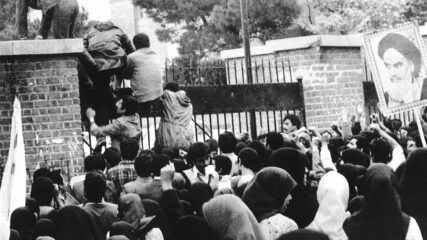Joel Singer, June 2, 2020
https://www.joelsinger.org/west-bank-areas-a-b-and-c-how-did-they-come-into-being/
In January, President Donald Trump published his long-awaited plan for resolving the Israeli-Palestinian Conflict: “Peace to Prosperity: A Vision to Improve the Lives of the Palestinian and Israeli People.” The president’s vision calls for Israel to annex roughly 30% of the West Bank – half of Area C – with Areas A, B and the balance of Area C allocated to the future State of Palestine (which is also slated to receive additional land, currently a sovereign part of Israel, of roughly equal size to lands to be annexed by Israel).
Israeli Prime Minister Benjamin Netanyahu is now actively pursuing unilateral annexation of half of West Bank Area C ,in accordance with Trump’s plan. In connection to this recent activity, questions have arisen: what exactly are Areas A, B and C; how they differ from one another; and how did they come into being?
This article tells the story of how I conceived the concept of dividing the West Bank into three areas, and why I named them Areas A, B and C.
Areas A, B and C – Defined
Under the Oslo Accords, the West Bank is divided into three non-contiguous areas, called Area A, Area B, and Area C. Approximately three million Palestinians live in the West Bank (Areas A, B and C combined), more than 90% of whom live in Areas A and B. Some 180,000-250,000 Palestinians live in Area C. Under the accords, Israel retained the responsibility for defending the West Bank against external threats, but all other responsibilities were allocated between Israel and the Palestinian Authority (PA), as follows:
Area A constitutes approximately 18% of the West Bank and includes the major Palestinian cities and towns, such as Ramallah, Nablus, Jenin, Tulkarem, Qalqilya, Bethlehem, as well as the Jericho Area. In accordance with the 1997 Hebron Protocol, Area A also includes 80% of the City of Hebron. In Area A, the PA has full responsibility for internal security (that is, the fight against terrorism), public order (that is, all police activity not related to internal security), and all civil affairs. In other words, Area A is controlled exclusively by the PA.
Area B constitutes approximately 22% of the West Bank and comprises all the other Palestinian heavily populated areas in the West Bank – around 450 towns, villages, refugee camps and hamlets. In Area B, the PA controls all Palestinian public order and civil affairs issues. Israel controls internal security issues in Area B, in coordination with the PA.
Area C is defined as all West Bank territory not allocated as Areas A or B. Accordingly, Area C comprises about 60% of the West Bank. It includes all the Jewish settlements (some 450,000 people who live in dozens of settlements), Israel Defense Forces (IDF) camps and military installations, areas of security importance, and other non-inhabited areas. In Area C, Israel controls all internal security and public order issues, as well as civil affairs issues, except that the PA controls all civil affairs issues for the Palestinians that reside in Area C, other than those related to the management of the land.
Gaza and the West Bank Compared
The Israel-PLO “Declaration of Principles on Self-Government Arrangements” (DOP) was concluded in Oslo and executed at the White House in September 1993. The DOP, while groundbreaking, is a short document consisting only of general principles. It did not address the issue of dividing the West Bank into distinct areas.
Similarly, the first DOP implementing agreement that Israel and the PLO concluded in 1994 – “the Gaza-Jericho Agreement” – did not address exact division of territories. As to Gaza, as much as the PLO wanted to take control of the Gaza Strip, Israel wanted to get rid of it more. Israel, therefore, transferred to the PA full control over Gaza, with regard to internal security, public order, and civil affairs matters, and kept full control over only several islands of Jewish settlements left in Gaza, as well as a very narrow strip of land along Gaza’s borders with Israel and with Egypt. The Jericho Area, located in the West Bank’s Jordan Valley, was simply treated as a tag along to Gaza: Israel transferred to the PA full responsibility for internal security, public order and civil affairs.
In 1995, negotiations commenced over the second DOP implementing agreement, which aimed to extend the autonomy arrangements throughout the West Bank, beyond the Jericho Area. As a part of this agreement – variably called the “Israel-PLO Interim Agreement,” “Oslo II,” or the “Taba Agreement” – due to important distinctions between Gaza and the West Bank, the need arose for a more nuanced treatment of allocation of responsibilities between Israel and the PA. Among the differences between the West Bank and Gaza:

- Unlike Gaza, whose only meaningful connection to Jewish history was the interaction between Jewish Samson and Palestinian Delilah, depicted on the left (which, as everyone knows, didn’t end that well for Samson), the West Bank (known in Israel by its biblical name, Judea and Samaria) is the birthplace of the Jews. Numerous Jewish religious and historical sites are scattered throughout the West Bank.
- Unlike Gaza, which actually relies on the supply of water from Israel, the West Bank and Israel share the same water aquifer, meaning that Israel could not transfer exclusive control over those water sources to the PA
- .Unlike Gaza, which only had a few Jewish settlements sparsely populated and all located within two settlement blocks (all of which have since been unilaterally evacuated by Israel), the West Bank is home to many dozens of Jewish settlements, now holding some 450,000, spread throughout the West Bank.
- Last but not least, Gaza is very small in size (only 140 square miles) and surrounded by a fence, thus making it easier for the IDF to defend against attacks from Gaza and protect the Jewish settlers then residing there. Conversely, the West Bank is much larger (at more than 2,000 square miles, 14 times larger than Gaza), was then not separated from Israel by a fence and has a relatively very long and winding border with Israel. The resulting security requirements for the Israel-West Bank border, as well the need to protect all of the Jewish settlers and their transportation routes, were significantly more complex than those applicable to Gaza.
Those and other distinctions between Gaza and the West Bank called for a different treatment for the allocation of responsibilities in the West Bank between Israel and the PA regarding two main issues: (1) internal security; and (2) control of the land (or “Jurisdiction” in the Oslo Accords lingo).
Drawing on Lessons Learned From the Post-Camp David Autonomy Talks
In drafting the Israel-PLO Interim Agreement, I considered negotiation positions presented 15 years earlier by Egypt (representing Palestinian interests), Israel and the United States. In 1979-1982, delegations of these three countries attempted to reach a full-fledged autonomy agreement to implement the 1978 Camp David Framework Agreement – which, too often forgotten, included agreed principles for an end to the Israeli-Palestinian Conflict as well as Israeli-Egyptian peace. During this period, I was the representative of the IDF in the Israeli delegation to the Autonomy Talks, and as a main drafter of the Israeli model for Palestinian Autonomy, I was very familiar with the positions of all parties during these negotiations.
Jurisdiction: In the 1979-1982 Autonomy Talks, Israel’s position was that autonomy would be “personal” – that is, the Palestinian self-governing body’s authority would apply to the Palestinian inhabitants of the West Bank and Gaza, but not to the territory of these areas. Egypt’s position, conversely, was that the Palestinian self-governing body’s authority should cover both the West Bank and Gaza’s inhabitants, as well as territory (including the Jewish settlements), with the exception of “specified security locations” into which Israeli forces would be deployed pursuant to the Camp David Accords. Importantly, under both Israel’s and Egypt’s positions, there was no need to draw any maps, except for the map of the “specified security locations.” This was because, at that point, both countries agreed that, outside the specified security locations, the Palestinian self-governing body’s authority should extend throughout the entire West Bank and Gaza. The only contention between Egypt and Israel was over the scope of authority (or jurisdiction) to be held by the Palestinians – Egypt angling for the Palestinian self-governing body to exercise exclusive authority in these areas (that is, Israel would not retain any responsibilities in there), whereas Israel’s position was that the autonomous Palestinian body would govern Palestinians wherever they were individually but not territorially, thus excluding the Palestinian self-governing body from assuming any responsibilities associated with managing the land of these territories.
Internal Security: During the 1979-1982 Autonomy Talks, both Israel and Egypt agreed that Israel would have exclusive responsibility for external security (that is, the defense against external threats) and that the Palestinian Police would be responsible for maintaining public order among West Bank and Gaza Palestinians. However, the Israeli and Egyptian positions diverged sharply with regard to responsibility for internal security. Israel’s position was that Israel would have exclusive responsibility for internal security throughout the West Bank and Gaza, whereas Egypt’s position was that the Palestinian Police would have exclusive responsibility for internal security in those areas. Moreover, Egypt argued that, after the withdrawal of most Israeli forces from the West Bank and Gaza, the remaining Israeli forces would be confined to small “specified security locations” and would not be able to move into or through the West Bank and Gaza without Palestinian permission. Israel’s position, conversely, was that Israeli forces would have complete freedom of movement and operation throughout the West Bank and Gaza.
How I Invented the Concept of Areas A, B and C
I always thought that the traditional Israeli and Egyptian positions on the issue of jurisdiction didn’t make a lot of sense. The Egyptian view that sought to provide a Palestinian self-governing body with full authority in the West Bank and Gaza, without a role for Israel, did not square with the aims of the negotiations at that point – Palestinian autonomy – and disregarded important geographic, security and demographic realities. The Israeli position regarding personal jurisdiction, which drew upon long-bygone nineteenth century concepts of cultural autonomy in Eastern and Central Europe, similarly disregarded the completely different realities in the West Bank and Gaza.

“Over the Town” by Marc Chagall
Moreover, the Israeli idea of separating the authority applicable to persons from the authority applicable to the land on which they stand may sound good in theory (at least to some people), but was completely impractical in reality. In fact, when Israeli Prime Minister Menachem Begin first published his proposal for Palestinian Autonomy, one observer equated Begin’s idea of personal autonomy to the surrealistic figures painted by Jewish French artist Marc Chagall, whose subjects tended to float in the air (Chagall’s painting “The Fiddler” inspired both the title of, and the main figure in the poster for, the musical “Fiddler on the Roof”). For a number of reasons, Begin and Egyptian President Anwar Sadat’s approaches toward Palestinian autonomy in the West Bank and Gaza were not realized, but among these reasons was the impracticality of their contested concepts of jurisdiction. So, in 1995, when drafting the detailed Israel-PLO Interim Agreement, I recognized a need to develop some third approach toward jurisdiction that would be more realistic than both the original Israeli and Egyptian positions presented 15 years earlier.
Things got even more complicated with regard to the other main issue – internal security. Here, I thought that Israel should retain exclusive responsibility for the fight against terrorism throughout the West Bank and Gaza, which had been the original Israeli position during the Autonomy Talks with Egypt and the U.S. in the early 1980s. When negotiating the DOP in Oslo, however, Israeli Prime Minister Yitzhak Rabin instructed me to propose the following formula for internal security, which the PLO accepted, and was included in the DOP: Israel would continue to be responsible for internal security of Israelis and the PLO would be responsible for internal security of Palestinians, under Israel’s overall responsibility for security. In other words, Rabin envisioned a situation in which Israel and the PLO would share the responsibility for internal security, rather than Israel alone being responsible for it.
Moreover, Rabin agreed in Oslo to allow the PLO to relocate from Tunisia to the West Bank and Gaza, accompanied by a large Palestinian armed force (called “Police” in the Oslo language) in order for it to be responsible, side-by-side with Israel, for maintaining internal security for Palestinians.
Again, the overarching principle regarding sharing responsibility for internal security, as included in the DOP, looked admirable and just, when written on paper – but how does one make it actually work on the ground? More specifically, given the close proximity and intertwining of Palestinian towns and Jewish settlements in the West Bank, and the fact that Palestinians and Israelis use the same roads, how does one ensure that the IDF and the Palestinian Police sharing responsibility for internal security (and both heavily armed) worked together in close quarters without confusion and without shooting at one another? This objective is always paramount when two or more armed units belonging to different nations work together – for instance, when cooperating under a military alliance such as NATO. It was doubly important with regard to the IDF and the PLO, who actually had been shooting at one another until shortly before the Oslo Accords were concluded. Ambiguity could be disastrous when it came to security issues.
In addressing all of the considerations related to jurisdiction and internal security, two principles guided me: First, the need to take into account territorial realities in translating high-level principles into workable solutions. And second, the need to strike the right balance between the Rabin-Shimon Peres left-wing government’s objectives – which were different from those of Begin’s right-wing government – to empower the PA and the Palestinian Police (including in the area of internal security), while preserving Israel’s interests. Accordingly, I developed a concept that called for dividing the West Bank into three areas with different recipes for allocation of responsibilities between Israel and the PA applicable in each.
Area A: As discussed above, in this area – the smallest in size of the three areas, but the most populated with Palestinians living in the West Bank’s large cities – I adopted the Egyptian position regarding jurisdiction and internal security, assigning the PA exclusive authority in both. To be clear, in this area the PA has exclusive authority over both the Palestinians residing there and the land, as well as exclusive responsibility for internal security. In fact, Palestinians residing in Area A could live their entire lives without ever seeing any Israelis, whether IDF soldiers or civilians, entering Area A.
Area C: Conversely, in Area C – the largest in size of the three areas, but the one that includes only a very minimal number of Palestinians and all the Israelis in the West Bank (settlers and IDF soldiers) – I adopted the original Israeli position regarding jurisdiction and internal security. Israel holds exclusive authority over internal security in Area C, as well as over most civil affairs issues (with an emphasis on those relating to the management of land). As an exception, however, with regard to the few Palestinians that live in Area C, the PA was granted authority to govern these Palestinians with regard to a wide range of civil affairs responsibilities, except for those relating to the management of the land itself. As such, the PA’s authority in Area C takes the form of Begin’s original personal jurisdiction concept – Palestinians living in Area C are subject to PA’s authority, but the land under their feet is not.
Area B: In between Area A and Area C, in an area that is the second most populous with Palestinians and the second largest in size – Area B – I created a new type of arrangement, which was a hybrid between the Egyptian model and the original Israeli model. Here, the PA has exclusive jurisdiction in all civil affairs matters applicable to both the Palestinians residing there and the land, as Egypt proposed, while Israel holds the authority over internal security matters. However, consistent with Rabin’s views regarding Israeli-Palestinian cooperation on security matters, the Interim Agreement included detailed arrangements regarding Israeli-Palestinian security cooperation in Area B.
How I Named the Three Areas
When an international agreement creates several territorial zones with different regimes, it is very common to give those zones names that would capture the essence of the applicable arrangements to bring more clarity and avoid confusion. Thus, the Israeli-Syrian Disengagement Agreement of 1974 created three areas on the Golan Heights: in the middle – an “Area of Separation” (where only U.N. forces and observers are allowed), and on each side of this area in Israel and Syria, an “Area of Limitation of Armaments and Forces.” Similarly, the 1975 Israeli-Egyptian Interim Agreement also included several zones in the Sinai: in the middle a “Buffer Zone,” and on each side of the Buffer Zone, an “Area of Limited Armaments and Forces.”
Based on these precedents, when developing the draft Israel-PLO Interim Agreement in 1995, I contemplated attaching descriptive names to the three areas outlined above. But then I recalled an event in which I had been involved when negotiating the Israel-Egypt peace treaty in 1978-79. At that time, I was an IDF representative in the Israeli delegation to the negotiations with Egypt and was responsible for drafting the military provisions of the peace treaty. During those negotiations, in order to separate between the Egyptian and Israeli forces, the Israelis and Egyptians agreed to divide the Sinai into three zones. One zone, along the border with Israel, would have no Egyptian forces in it and only a few Egyptian police officers. In the middle of the Sinai, a large zone would have very limited Egyptian military forces. And along the Suez Canal, Egypt would be allowed to deploy only one division. (Symbolically, there was also a fourth, very narrow zone on the Israeli side of the border with limitations on Israeli forces).
In order to signify that the entire Sinai Peninsula would serve as a big buffer zone to prevent another Egyptian surprise attack against Israel (as happened in the 1973 Yom Kippur War), in the draft that I presented to the Egyptian negotiators I named these zones in the Sinai in the same order described above: a “Buffer Zone,” followed by a “Demilitarized Zone,” and then a “Limited Forces and Armaments Zone.” My Egyptian counterparts, however, objected strongly to the names I proposed. Their counter proposal for naming these zones, apparently driven by national honor considerations, was (again in the same order): the “Egyptian Police Zone,” the “Limited Egyptian Forces Zone,” and the “Main Egyptian Forces Zone.” This argument continued even after we resolved most of the substantive issues.
One day, I had an idea on how to resolve the argument. I told my Egyptian counterpart: “How about simply calling these areas: Zone A, Zone B, Zone C, and Zone D?” Before I even completed the sentence, the Egyptian negotiator clasped my hand, shook it and said: “Agreed!” And this is how those zones were ultimately named in the peace treaty.
Back to 1995. To avoid a similar squabble with the Palestinians over the names of the West Bank areas, during the Oslo II negotiations I simply proposed to call them: Area A, Area B, and Area C. The Palestinian negotiators immediately accepted these names and they were included in the Interim Agreement. The rest is history.









